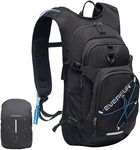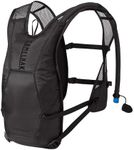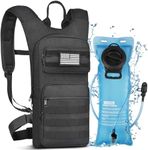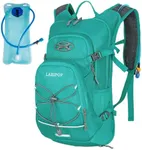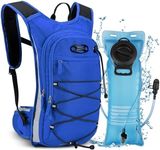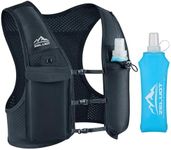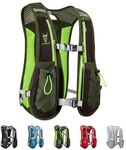Buying Guide for the Best Hydration Backpack For Ski
Choosing the right hydration backpack for skiing is crucial to ensure you stay hydrated and comfortable on the slopes. A good hydration backpack will not only carry your water but also provide space for other essentials like snacks, extra layers, and safety gear. When selecting a hydration backpack, consider the following key specifications to find the best fit for your needs.CapacityCapacity refers to the volume of the backpack, usually measured in liters. This spec is important because it determines how much water and gear you can carry. For short ski trips or those who prefer to travel light, a smaller capacity (1-5 liters) may be sufficient. For longer trips or those who need to carry more gear, a larger capacity (6-20 liters) is recommended. Consider your typical ski trip duration and what you need to carry to choose the right capacity for you.
Hydration Bladder SizeThe hydration bladder size indicates how much water the bladder can hold, typically measured in liters. This is crucial for ensuring you have enough water to stay hydrated throughout your ski session. Bladders usually range from 1 to 3 liters. If you tend to ski for shorter periods or have access to water refill stations, a 1-2 liter bladder may suffice. For longer sessions or remote areas, a 2-3 liter bladder is more appropriate. Think about your hydration needs and the availability of water sources when choosing the bladder size.
InsulationInsulation in a hydration backpack helps keep the water from freezing in cold temperatures, which is essential for skiing. This spec is important because it ensures you have access to liquid water even in freezing conditions. Insulated hydration packs often have thermal sleeves for the bladder and insulated tubes. If you frequently ski in very cold environments, look for a backpack with good insulation features. For milder conditions, insulation may be less critical but still beneficial.
Fit and ComfortFit and comfort are crucial for a hydration backpack, especially when skiing, as you need to move freely and comfortably. This spec includes adjustable straps, ergonomic design, and padding. A well-fitting backpack will distribute weight evenly and reduce strain on your back and shoulders. Look for backpacks with adjustable chest and waist straps to ensure a snug fit. Try on different models to see which one feels most comfortable and allows for a full range of motion.
DurabilityDurability refers to the backpack's ability to withstand the harsh conditions of skiing, including cold, moisture, and rough handling. This spec is important because a durable backpack will last longer and protect your gear. Look for materials like ripstop nylon or polyester, which are known for their strength and resistance to tearing. Reinforced seams and high-quality zippers also contribute to durability. Consider the conditions you'll be skiing in and choose a backpack that can handle those challenges.
Storage and OrganizationStorage and organization refer to the number and type of compartments and pockets in the backpack. This spec is important for keeping your gear organized and easily accessible. Some backpacks have specialized pockets for goggles, snacks, tools, and other essentials. If you carry a lot of gear, look for a backpack with multiple compartments and pockets. For minimalists, a simpler design with fewer pockets may be sufficient. Think about what you typically carry and how you like to organize your items when choosing a backpack.
